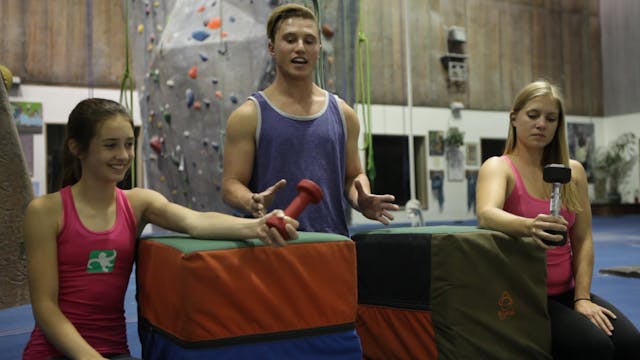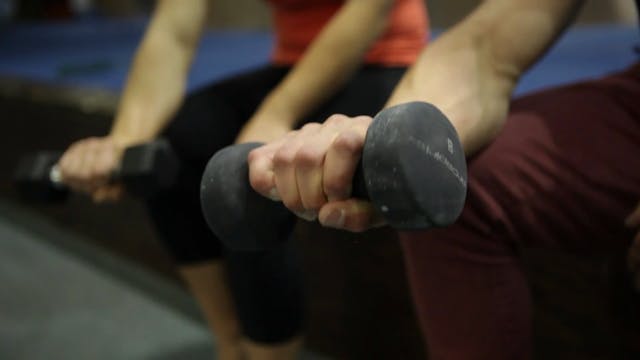Fitness for Climbing: 1. Myofascial Release - Pectoral Muscles
Fitness for Climbing
•
2m 28s
In this video we review how to use a lacrosse ball for myofascial release. Myofascial release is a term used to describe rolling yourself out. Key muscles are targeted.
Here we review how to roll out your chest muscles using a lacrosse ball. This is an important exercise for climbing because, when on the wall, one of the areas to resist the back muscles are your chest muscles. This exercise is designed to loosen that resistance, allowing your back muscles to be used more effectively.
Instructions:
Step 1: Place the lacrosse ball where your chest muscles meet your shoulder muscles.
Step 2: Face the wall with square hips, pinning the ball between the wall and the targeted area of your chest muscle. Your face should be turned to the side which you intend to roll out, NOT facing forward.
Step 3: Use your legs to move your body in a slow, circular motion making sure to keep the circles small.
Once the targeted area feels loose, you can move the ball and target different areas of your pectoral muscle.
Things to Avoid:
Placing the ball too low on your pectoral muscle
Moving up and down as opposed to circular
Moving too fast.
We hope you found this video helpful. Feel free to comment below with questions or thoughts!
Please remember, climbing is inherently dangerous. Climb at your own risk.
Up Next in Fitness for Climbing
-
Fitness for Climbing: 2. Myofascial R...
In this video we review how to use a lacrosse ball for myofascial release. Myofascial release is a term used to describe rolling yourself out. Key muscles are targeted.
Here we review how to roll out your upper back muscles using a lacrosse ball. This is an important exercise for climbing beca...
-
Fitness for Climbing: 3. Pronation fo...
A common climbing injury is called medial epicondylitis. This is also known as golfer's elbow. In this video we review the exercise Pronation for Antagonist (extensor) Training to help minimize that injury.
Golfer’s elbow occurs when there is damage to the medial epicondyle, which is located o...
-
Fitness for Climbing: 4. Wrist Extens...
In this video we review an exercise known as Wrist Extensions for Antagonist (Extensor) training. This exercise helps prevent tendon injury, the most common of which is called medial epicondylitis. This is otherwise known as golfer's elbow.
Golfer’s elbow occurs when there is damage to the med...


